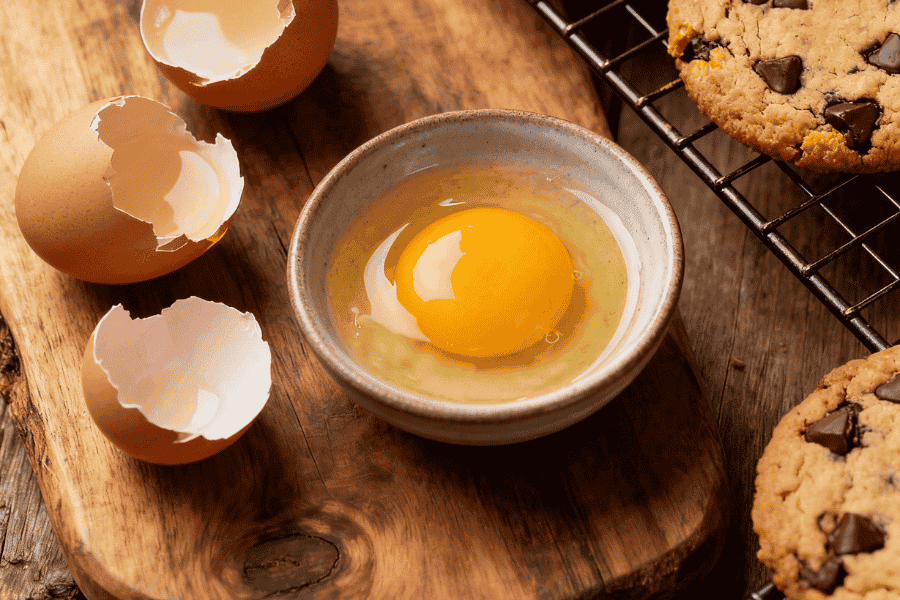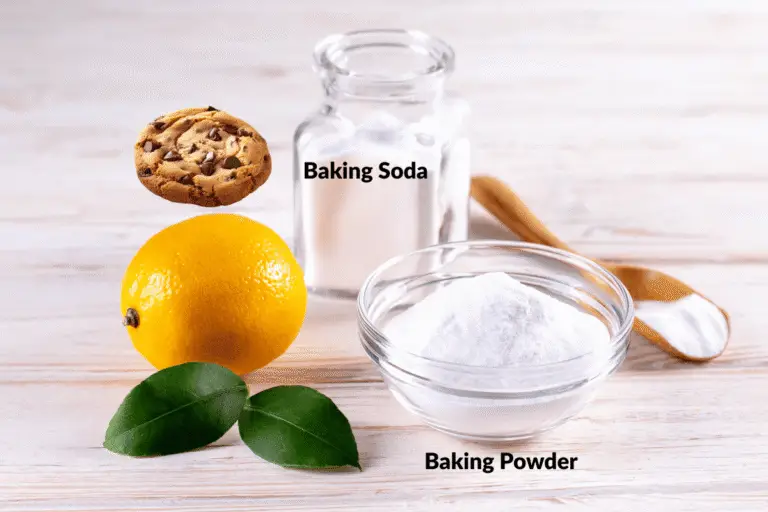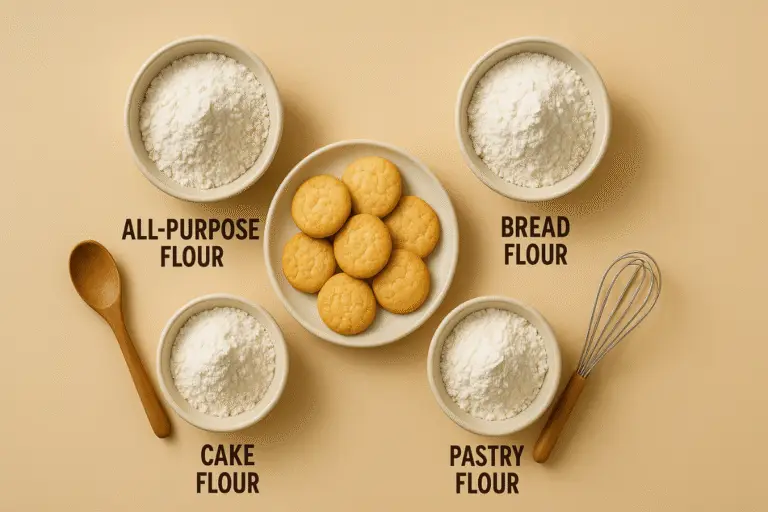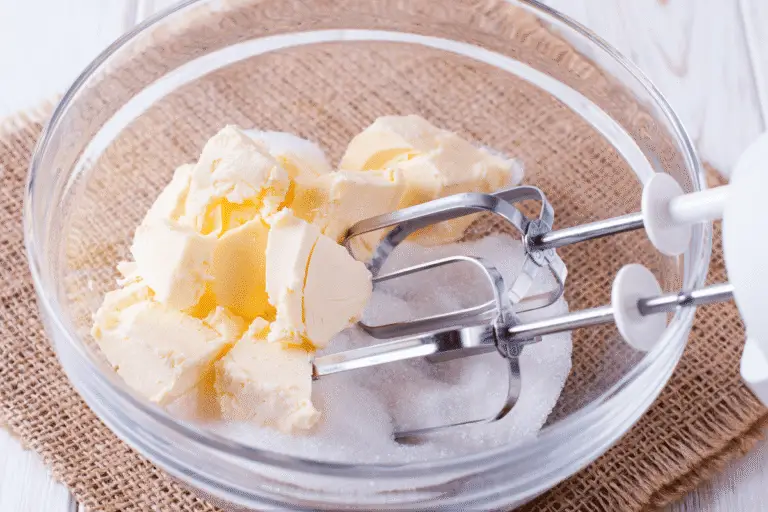What Do Eggs Do in Cookies? (Yolks, Whites & Extra Egg Secrets)
Do cookies really need eggs?
It’s a question that pops up in almost every kitchen, from first-time bakers to seasoned pros. Some recipes call for a single egg, others for two, and a few leave eggs out altogether. This creates confusion: what do eggs do in cookies, and can you skip them without ruining your cookie batch?
With over 17 years in the cookie industry, I have worked with countless recipes, formulations, and large-scale production methods. Eggs are one of the most versatile ingredients in baking, but their role is often misunderstood. They aren’t just “there” to hold the dough together — eggs also play a crucial role in texture, structure, color, and even the flavor of your cookies.
In this post, we will break down the science of eggs in cookies: how the yolks and whites behave differently, what happens when you add an extra egg, and whether you can replace eggs entirely. By the end, you will know exactly when eggs are essential and how to tweak them for the perfect cookie , whether you want soft, chewy centers, crisp edges, or rich golden color.
Eggs are one of the basic cookie ingredients that every baker should understand before starting a recipe.
The Role of Eggs in Cookies 🍪
Eggs play a multifunctional role in cookie baking. They aren’t just “fillers” — they actively shape the texture, appearance, and flavor of the final product. Their main functions include:
- Moisture – Eggs are nearly 75% water (74.8%), which adds hydration to the dough and influences how cookies spread and soften during baking.
- Structure – Proteins (about 12.3%) in eggs coagulate under heat, giving cookies stability and helping them hold their shape.
- Richness & Flavor – Egg yolks, with about 10.9% fat, add tenderness, richness, and a golden color.
- Binding – Eggs act as natural “glue,” holding the dough together so cookies don’t crumble apart.
- Emulsification – Thanks to lecithin (about 1.5%), eggs bring fat and water together into a smooth, even mixture, leading to consistent doughs and uniform cookies.
Each component of the egg affects texture differently, and learning how ingredients affect cookie texture will help you troubleshoot your own batches.
Typical Composition of Whole Fresh Eggs (%)
| Component | Percentage (%) |
| Water | 74.8 |
| Fat | 10.9 |
| Lecithin | 1.5 |
| Protein | 12.3 |
Source: Parkinson, T. L. and Wilkinson, H. (1975). Egg Properties in Relation to Baking Performance, FMBRA Report No. 65.
Yolk vs. White
- Egg yolk: Rich in fat and lecithin, yolks contribute creaminess, tenderness, and flavor. They also enhance browning, giving cookies a golden color.
- Egg white: Mostly protein and water, whites add structure and crispness. They help cookies set and rise but can make them drier if used alone.
Industry Insight 🏭
In large-scale biscuit production, eggs are rarely used because they are expensive compared to other ingredients. Instead, manufacturers source fat and emulsifiers from alternative, cost-effective materials. However, eggs still shine in products like sponge-based biscuits (e.g., Jaffa Cakes, Sponge Fingers/Boudoir biscuits), where their delicate flavor and foaming ability are irreplaceable.
This duality explains why home bakers continue to rely on eggs for cookies, while industry sometimes finds substitutes for efficiency.
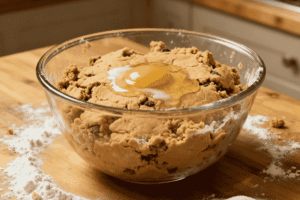
What Does Egg Yolk Do in Cookies? 🥚🍪
Egg yolks are the richness boosters of cookies. Thanks to their fat and lecithin content, yolks bring several important qualities to your dough:
- Richness & Tenderness – The fat in yolks softens the texture, making cookies tender instead of tough.
- Golden Color – Yolks naturally add a warm yellow hue, helping cookies bake up with that appetizing golden-brown finish.
- Moisture Retention – Yolks lock in moisture, keeping cookies soft and chewy for longer.
- Flavor Enhancement – The subtle, creamy flavor from yolks balances sweetness and deepens the overall taste.
💡 Pro-Tip for Bakery-Style Cookies: Want that perfectly soft, chewy, and rich cookie you find in high-end bakeries? Here’s an industry secret: replace one whole egg in your recipe with two egg yolks. You will get all the richness and tenderness without the extra water from the egg white, resulting in a denser, more indulgent cookie.
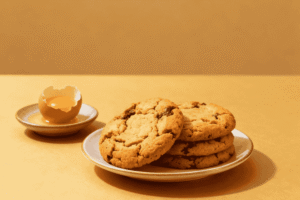
What Do Egg Whites Do in Cookies? 🍪✨
Egg whites are the structure builders in cookie recipes. Unlike yolks, they don’t bring fat or richness — instead, they deliver proteins and water that transform during baking:
- Lift & Structure – The proteins in whites coagulate when heated, helping cookies set and maintain their shape.
- Crisp Edges – Since whites lack fat, they dry out faster in the oven, creating light, crisp edges.
- Stability – Whites add strength to the dough, preventing cookies from spreading too much.
💡 Pro Tip (from professional baking experience): Using more egg whites without yolks can make cookies lighter, thinner, and crunchier — but they may taste less rich. Balance is key.
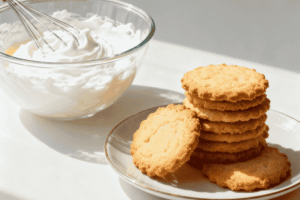
Egg Yolk vs Whole Egg in Cookies 🥚🍪
Both yolks and whole eggs have distinct effects on cookie recipes:
- Egg Yolk Only – Using yolks adds richness, tenderness, and golden color. Cookies tend to be softer, denser, and more flavorful because yolks are high in fat and lecithin.
- Whole Egg – Whole eggs balance yolk fat with the protein of whites, providing structure, lift, and stability. Cookies made with whole eggs are lighter, slightly drier, but hold their shape better.
Industry Insight 🏭
In large-scale biscuit production, whole eggs are often used for glazing. A light egg wash before baking gives cookies a glossy, golden-brown finish with a subtle eggy flavor. This not only improves appearance but also enhances shelf appeal.
💡 Pro Tip: If you want cookies with softer centers, try adding an extra yolk. If you want cookies that hold structure better, stick with whole eggs.
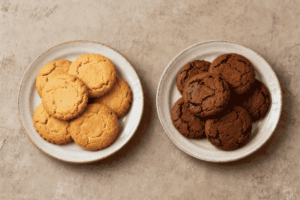
🍪 How Eggs Change Cookie Texture
Adding Extra Egg or Egg Yolk in Cookies 🍪🥚
Small changes in the number of eggs can completely transform cookie texture. Both whole eggs and yolks influence cookies differently:
- Adding an Extra Whole Egg – Creates softer, cakier cookies because of the added moisture and protein. The whites give more structure, making cookies puffier and less dense.
- Adding an Extra Egg Yolk – Produces chewier, richer cookies. The extra fat and lecithin from yolks add tenderness and a deeper golden color without excess moisture.
My Test Results 👨🍳
From my professional trials in recipe development:
- A standard chocolate chip cookie batch with 1 extra whole egg turned out softer, lighter, and more cake-like — perfect for those who prefer fluffier cookies.
- The same batch with 1 extra yolk gave me chewy, gooey-centered cookies with an indulgent richness — ideal for bakery-style cookies.
💡 Pro Tip: If you want soft and chewy bakery-style cookies, replace one whole egg in your recipe with two yolks.
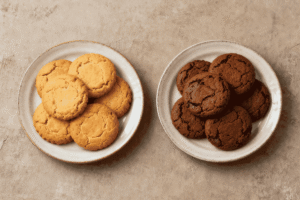
Do All Cookies Have Eggs? 🍪
Not all cookies require eggs. While eggs are a traditional ingredient for structure, richness, and binding, many egg-free cookie recipes exist — making them suitable for vegans, those with egg allergies, or bakers who simply run out of eggs.
Examples of Egg-Free Cookies 🥣
- Classic Shortbread Cookies
Made with just butter, flour, and sugar, shortbread is naturally egg-free. The result is a crumbly, melt-in-your-mouth texture. - Vegan Chocolate Chip Cookies
Instead of eggs, bakers use flax “eggs” (ground flaxseed + water), chia seeds, or applesauce. These alternatives help bind the dough and keep the cookies soft. - Peanut Butter Cookies
Some 3-ingredient recipes use only peanut butter, sugar, and flour — no eggs required. These are chewy, rich, and full of flavor.
👉 So while many cookie recipes do include eggs, there’s a wide world of egg-free cookies out there that can be just as delicious.
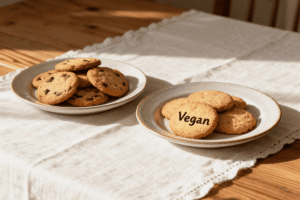
How Many Eggs in Cookies? 🥚🍪
Most standard cookie recipes call for 1–2 eggs. This is usually enough to provide the right balance of moisture, structure, and binding without overwhelming the dough.
- 1 egg → Gives a slightly crisper cookie with a lighter texture.
- 2 eggs → Adds more moisture, richness, and chewiness.
- Extra egg yolk → Makes cookies softer and more tender.
- Extra egg white → Contributes to lift and crispness but can make cookies drier.
Industry Insight 🏭
In large-scale biscuit and cookie production, eggs are typically used in liquid form rather than shell eggs. This ensures:
- Consistency → Every batch of dough has the same texture and hydration.
- Efficiency → Easier to handle and measure in bulk.
- Standardization → Critical for meeting product specifications and customer expectations.
So while home bakers might crack one or two eggs into their dough, professionals in the industry think about eggs in terms of kilograms or liters of liquid egg, carefully calibrated to keep recipes uniform at scale. Whether you’re scaling recipes or trying different flours, using our baking conversion calculator ensures your egg measurements (and other ingredients) stay consistent.
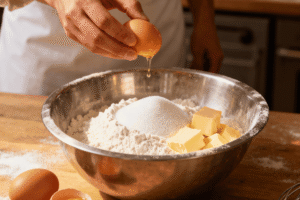
Handling Eggs in Baking 🧼🥚
Eggs are a powerful ingredient in cookies, but they also come with important food safety considerations.
Food Safety and Hygiene
- Microbial risk – Eggs are an ideal medium for the growth of microorganisms. Fresh shells may carry pathogens like Salmonella, which can transfer to hands, utensils, or dough.
- Proper cleaning – Always wash and sanitize bowls, mixers, and tools that come into contact with raw eggs.
- Pasteurization – Commercial egg products (liquid, frozen, or powdered) are often pasteurized to kill pathogens, making them safer for large-scale use.
- Baking safety – Luckily, the baking process destroys all microorganisms, so fully baked cookies are safe to eat.
Allergen Warning ⚠️
Eggs are one of the top eight food allergens worldwide. Even small amounts can cause severe reactions in sensitive individuals. When baking for others:
- Always disclose if eggs are in your recipe.
- If serving a crowd, consider egg-free alternatives to ensure inclusivity.
- Label cookies clearly when selling or sharing, especially in bakeries or events.
Industry Insight 🏭
In professional bakeries, strict hygiene systems are in place when handling fresh eggs. Many avoid cracking eggs on-site and instead purchase pasteurized liquid or dried egg products to reduce contamination risk and improve consistency.
According to research on egg properties in baking performance (Serious Eats), eggs not only improve texture but also require careful handling to avoid risks like Salmonella. Poor handling or missing eggs can also lead to texture issues — for example, cookies turning out too soft or burning on the bottom.
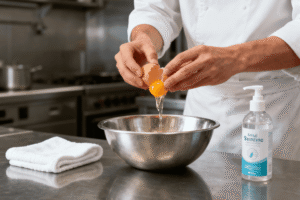
Substitutes for Eggs in Cookies 🥚➡️🌱
Sometimes you want (or need) to bake cookies without eggs — whether for dietary, allergy, or vegan reasons. Thankfully, there are plenty of egg substitutes that can deliver similar moisture, binding, and structure.
Popular Egg Replacements at Home
- Flax egg – 1 tbsp ground flaxseed + 3 tbsp water = 1 egg. Great for binding and adding light nuttiness.
- Chia egg – 1 tbsp chia seeds + 3 tbsp water = 1 egg. Works similar to flax but with a slightly denser texture.
- Yogurt – ¼ cup plain yogurt replaces 1 egg, adding moisture and tenderness.
- Mashed banana – ½ banana per egg. Adds sweetness and chewiness, best for soft cookies.
- Applesauce – ¼ cup unsweetened applesauce replaces 1 egg. Keeps cookies moist but can make them a little cakey.
- Commercial egg replacers – Ready-made powders designed to mimic egg function in baking.
Industry Insight 🏭
In biscuit manufacturing, using whole eggs is rare due to cost and handling challenges (cracking, storing, and measuring thousands of eggs isn’t practical). Instead, the industry relies on:
- Soya lecithin – A cheap, efficient emulsifier that mimics the lecithin in egg yolks, helping fats and liquids blend smoothly.
- Spray-dried or frozen egg – When egg functionality is needed, these are purchased in bulk for convenience and consistency.
- Alternative emulsifiers – Various blends that provide structure and stability without the expense of whole eggs.
This shows the contrast: home bakers lean on natural pantry substitutes, while the industry optimizes for cost, scale, and efficiency. If you’re experimenting with replacements, make sure you also avoid common cookie baking mistakes that can ruin the final outcome.
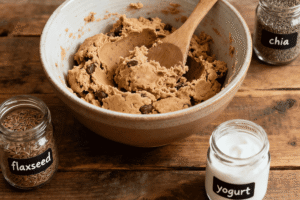
Conclusion
Eggs are truly a powerhouse ingredient in cookie baking. They bring moisture, structure, richness, binding, and emulsification, all in one simple component. Whether you use whole eggs, just the yolk, or incorporate extra whites, your choice directly affects how your cookies will turn out — from chewy and golden to light and crisp.
In my 17+ years in the cookie industry, I’ve seen firsthand how small tweaks to egg content can make or break a recipe. By understanding what do eggs do in cookies, you can tailor your own recipes to emphasize chew, softness, lift, or flavor.
Next time you bake, try experimenting: drop one egg, add an extra yolk, or even go egg-free. Watch what happens, take notes, and build your instinct. Cookies respond to small changes — and eggs give you one of the most powerful levers.
FAQ About What Do Eggs Do in Cookies
Q. What is the purpose of the egg in cookies?
Q. What happens if you don't add eggs to cookies?
Q. What is the benefit of eggs in cookies?
Q. Do eggs make cookies fluffier?
Q. What happens if I put too much egg in my cookies?
Q. What can I replace eggs with in cookies?

